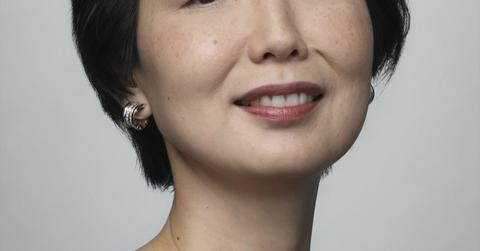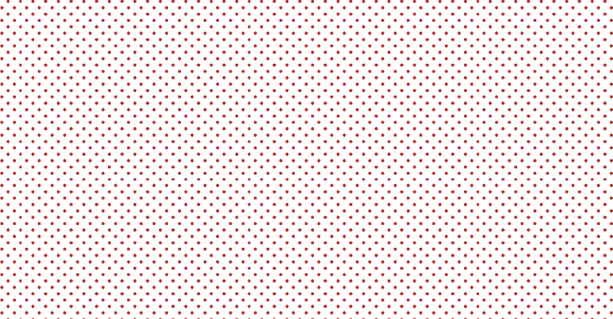When you are tasked with gaining 10 million subscribers by 2025, you have to be laser focused and metric driven. Hannah Yang, the head of subscription growth at The New York Times, is just that.
Yang was born in Korea but immigrated to the United States with her family when she was nine years old. A lawyer by trade, she left the legal world to find an opportunity that blended her visual interests and desire to better the world in which we live. In person, that desire is made clear in her candid storytelling–heartfelt questions with herself after professional twists and turns, including a four-year break to take care of her children.
Yang has a long-standing appreciation for journalism; and thanks to some serious advice from a few key women early in her career, she pivoted and gained the skills needed to handle the strategy side of the future of newspapers. Prior to cutting her teeth at The Boston Globe, she had a stint at CBS News and now leads a 100+ person team. She fully embraces her role and the formidable directive she has to tackle. You can’t help but root for her, if not for being a stickler for accountability, then for her commitment to quality journalism.
Her Agenda braved a rainy afternoon to meet up with Yang at The New York Times building to chat about her transition from law to journalism, the importance of mentors, and her Jenga-like personal life.
Her Agenda: You’ve been at The New York Times for almost a decade, why? What drives you?
Hannah Yang: I had a lot of gigs before I got here. When I got here, I went through some turmoil: ‘What am I really good at? What am I passionate about?’ I felt an immense appreciation for having landed somewhere I felt like I could shine. I wasn’t going anywhere. By the time I got here, the role aligned with both my passion, quality journalism, and my skill set, to be very metrics driven and business-minded. I really like managing people and being in a complex organization, where there are a lot of balancing acts to be weighed. The complexity of The Times, which some people complain about, I find energy in it. I feel like I’m part of something that is bigger than myself. It’s something that makes the world a better place. Combining these two things, I honestly don’t know if I can find something that could have that balance. Marrying that rigor and that deep commitment to humanity is something that is hard to come by.
-I feel like I’m part of something that is bigger than myself. It’s something that makes the world a better place.
Her Agenda: Do you consider yourself a growth hacker? Why or why not?
Hannah Yang: I read a bunch of books. I’ve read every book about growth hacking. I signed up for newsletters. Andrew Chen has one that I read religiously. It’s a fascinating movement. It has done a lot to change the growth trajectory of a lot of companies. To be honest, I took some of those things and applied them to how I manage here but so much of how I manage has to do with how I know this place works. It’s very different from digital startups.
They don’t have a lot of legacy and infrastructure that exists and will always exist. We have a different agenda than those companies. It’s been about growing a sustainable model that supports quality journalism. It’s not growth for growth’s sake. It’s not for business result sake.
There are a lot of things we don’t do to grow faster because it’s not good for society. We are very principled in how we do things. However, I do think that some of the principles of the growth hacking mindset have been very useful in challenging us in how we work. The most impactful way which that movement helped us prepare better for the future is to become a lot more cross-functional. Dependency has always existed at The New York Times but as we became digital first, subscriber-first, we realized that silos have to break down. My team is inherently cross-functional. The vast majority don’t report into me, they report into their functional leads.
-This place, the New York Times, values good people. They value people who are morally, ethical, good people.
Her Agenda: How important is job culture to you?
Hannah Yang: Job culture is critical, absolutely critical. I’ve landed at a place that fits very well with my priorities. This place [the New York Times] values good people. They value people who are morally, ethical, good people.
At the same time, I’ve tried to change the culture. We’ve made a lot of progress in diversity over the years, more so on the business side than in the newsroom. It’s critical, not just morally but from a business and journalistic perspective. We’ve done well in hiring but if you look at leadership, we still have a long way to go. I can count on my right hand the number of African Americans who are executive directors or above. I do think that people are more likely to leave because they don’t feel like they belong and it’s not a place for them.
I can relate as an Asian woman to go into a room full of senior white men and have to speak my mind.
It takes a lot of courage for someone like me than others. I’ve been able to do that more over the years. It was hard personal work to become more brave. But I see the younger women struggle on a constant basis. As I become more senior, I’ve become a lot more conscientious. When I see that happening now, I make it a point to do something about that. I give them opportunities to speak up. I practice with them. I open up my vulnerabilities more.
I am also very rigorous. I push people. Getting people more metrics driven and holding them accountable for results is another thing that we can do a better job of. If you didn’t do your job, you need to call that out.
-I was born this way. I sincerely believe we have to be more rigorous, metrics driven and direct in order for us to do well as a business.
Her Agenda: Do you think your directness is part of your upbringing?
Hannah Yang: I don’t think it has to do with how I was raised, or my cultural background. My mom was a tiger mom but she was very quiet in the way she was a tiger mom. She expected us to do well. For me, I was born this way. I sincerely believe we have to be more rigorous, metrics driven and direct in order for us to do well as a business. We have to meet the numbers. Everyone has to play their part. If we don’t, it could be bad for our growth story. You have to do it in a rigorous yet positive way. We have to feel motivated to do it versus being fearful. That’s a very tricky thing. I try to celebrate failures if someone takes accountability, but we did it in the spirit of experimentation.

Her Agenda: How do you find harmony in your personal and professional lives? Do they coexist?
Hannah Yang: There is no harmony. It doesn’t exist. I have two boys, a 13-year-old and an 11-year-old. I love them to death but it’s a lot of work. When they are little, they need a lot of you. Emotionally, I think they need a lot of you [as teenagers]. I am much more vigilant now about things like ‘What are they loading on their devices? Who are they friends with? What kind of books should they be reading?’ That is something that is very time consuming and I have to be thoughtful about it. I do struggle with this very intense, high-pressure job. Our future is hinging on that (subscription growth). I alone cannot make that impact but I have taken the role voluntarily to represent that. It’s high profile yet high stress. Yet, I have these two children and a husband who travels constantly. I try to keep it all together.
-You can call it harmony or chaos. I think it’s like a game of Jenga. If you take one little piece out, everything’s going to crumble. That’s why I cannot imagine having a job that I’m not passionate about.
You can call it harmony or chaos. I think it’s like a game of Jenga. If you take one little piece out, everything’s going to crumble. That’s why I cannot imagine having a job that I’m not passionate about. The draw from work has to be bigger than the draw from home.
[Editor’s note: This interview has been edited for length and clarity. The intro was updated to correct Hannah’s age when she came to the U.S. She was nine Previously we stated she was four. Photo credit: The New York Times.]








